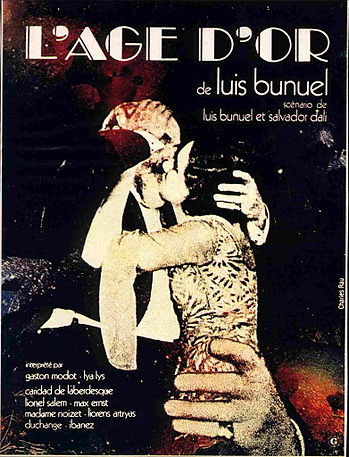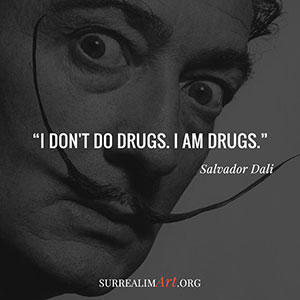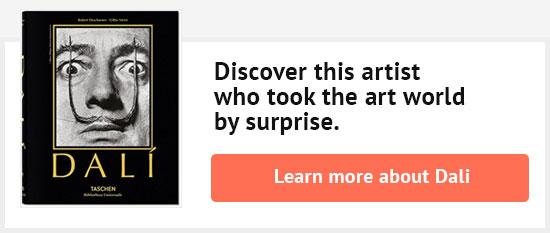L’Âge d’or(Golden age), the bold gamble of Dalí and Buñuel

Movie L’Âge d’or (golden age), directed by Luis Buñuel and scripted by sSalvador Dali, released on november 28th 1930, marks, according to some experts, the climax of the surrealist cinema.
However, at the time of its release, L’Âge d’or (The Golden Age) does not win unanimous support and is subject to strong criticism, as well as censorship.
After the success of Un Chien Andalou, the first film on which Buñuel and Dalí worked together, the two artists receive a fee from Viscount Charles de Noaille and his wife Marie-Laure, supporters of surrealism, to produce a second film; The latter, which should be called La bête Andalouse (The Andalusian Beast), intended to follow explicitly Un Chien Andalou. One thing leads to another; the project transforms, and results in The Golden Age.
Synopsis of L'Âge d'or
In itself, L’ ge d'Or is somewhat reminiscent of Un Chien Andalou: the synopsis, as rudimentary and diffident as it is, also revolves around the strange love story of a man and a woman; the storyline is deconstructed, if not downright forgotten, the film opens on a documentary about scorpions and ends with an interpretation of a text of the Marquis de Sade. The film, full of black humor and violence, denounces the bourgeois social sphere and accuses it of having caused the war: horrible, subversive and provocative pictures follow each other on the screen, resembling a collage (a technique used by a number of 'surrealist visual artists) seeking to establish in the minds of the viewers a direct association between established order and corruption, in a sense.
The first two public performances of The Golden Age, being the preview showing on October 22nd, 1930, and the premiere on November 28th, are quite calm: some voices rise, like that of André Thirion (writer and political activist), but especially to declaim the de Noailles, aristocrats who believe to be revolutionaries and think to overthrow the established order, when they know nothing about misery. On December 3rd, 1930, however, things heat up: the right-wing activists and anti-Semitic movements ransack the cinema during the presentation of the film, destroying the screen and works of Dalí, Max Ernst, Miró, Yves Tanguy and Man Ray hung inside the theater. Faced with such insurrection, the French Censor Board has no choice but to take hold of the film. The international surrealists react strongly and produce many tracts denouncing the pro-Nazi political police which keep them from producing and publicly exposing their art.
While one might think that this is the end of the story of The Golden Age, there is still the bold work of Dalí and Buñuel, one last trick up his sleeve: the Vicomte de Noailles keeps the uncensored copy of the film, and in 1937 it begins to circulate, under the name of Dans Les Eaux glacées du Calcul égoïste (In the icy water of egotistical calculation). In 1949, we project the film again in public at the French Cinémathèque, and the projection ban was finally lifted officially in 1981.
Since 1958, the Belgian cultural bodies award the Golden Age prize annually to a film that, like Buñuel and Dalí, goes against the current international cinematography, innovates and offers a different aesthetic, both in writing and in artistic direction. Several notable filmmakers such as Martin Scorsese (1967), Jean-Luc Godard (1980), Manoel de Oliveira (1985) and Jonas Mekas (2013) have won this distinguished honor since its instigation.
L’Âge d’or in video

“I don't do drugs. I am drugs.”
See more quote by Salvador Dali
- History of Surrealism André Breton Branches of Surrealism Timeline Surrealist cinema The Automatistes Group Surrealism Manifesto Origin of surrealist painting Surrealist writing techniques
- Surrealist Artists Francis Picabia Jean Arp Joan Miro Man Ray Max Ernst
- René Magritte Biography Magritte & Lothar Wolleh
- Salvador Dali Biography Artworks Eccentric character Dali & Man Ray Dali & Picasso L'Âge d'or The Persistence of Memory The Hallucinogenic Toreador Movies Salvador Dali Museum



